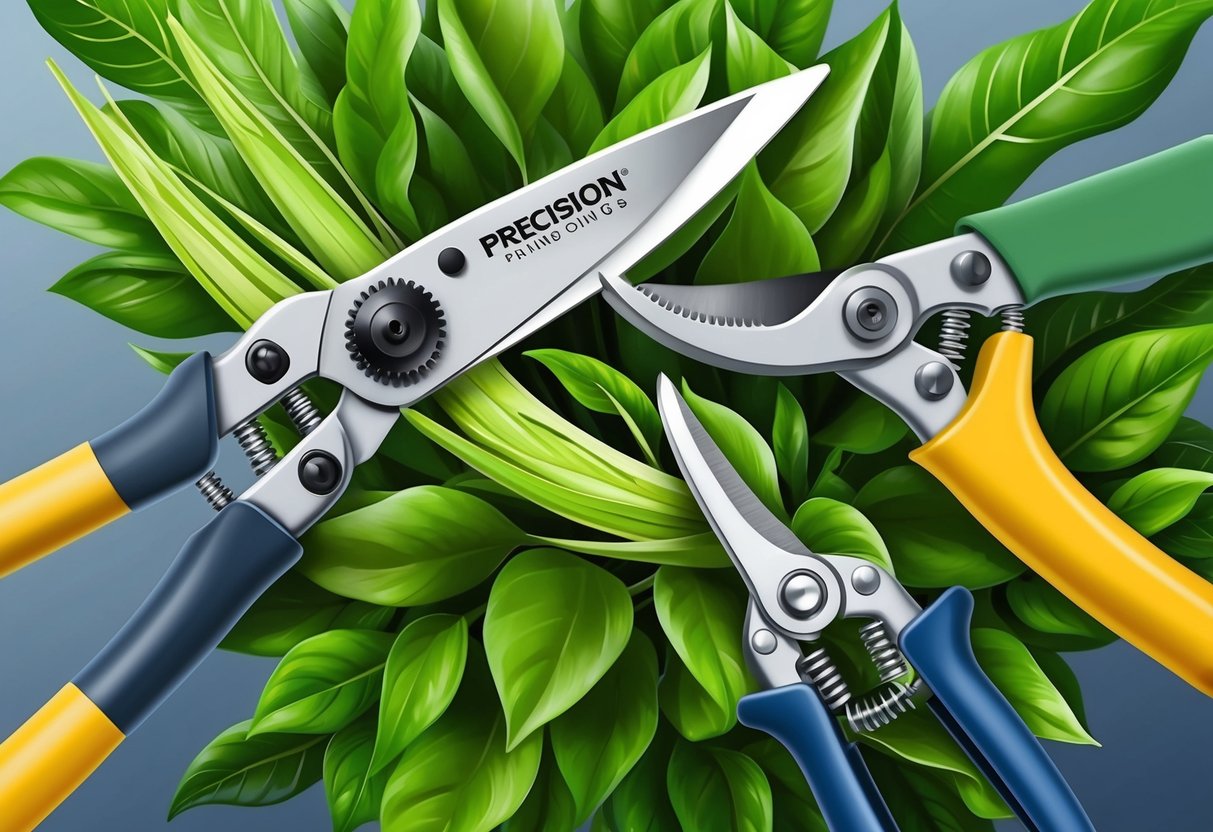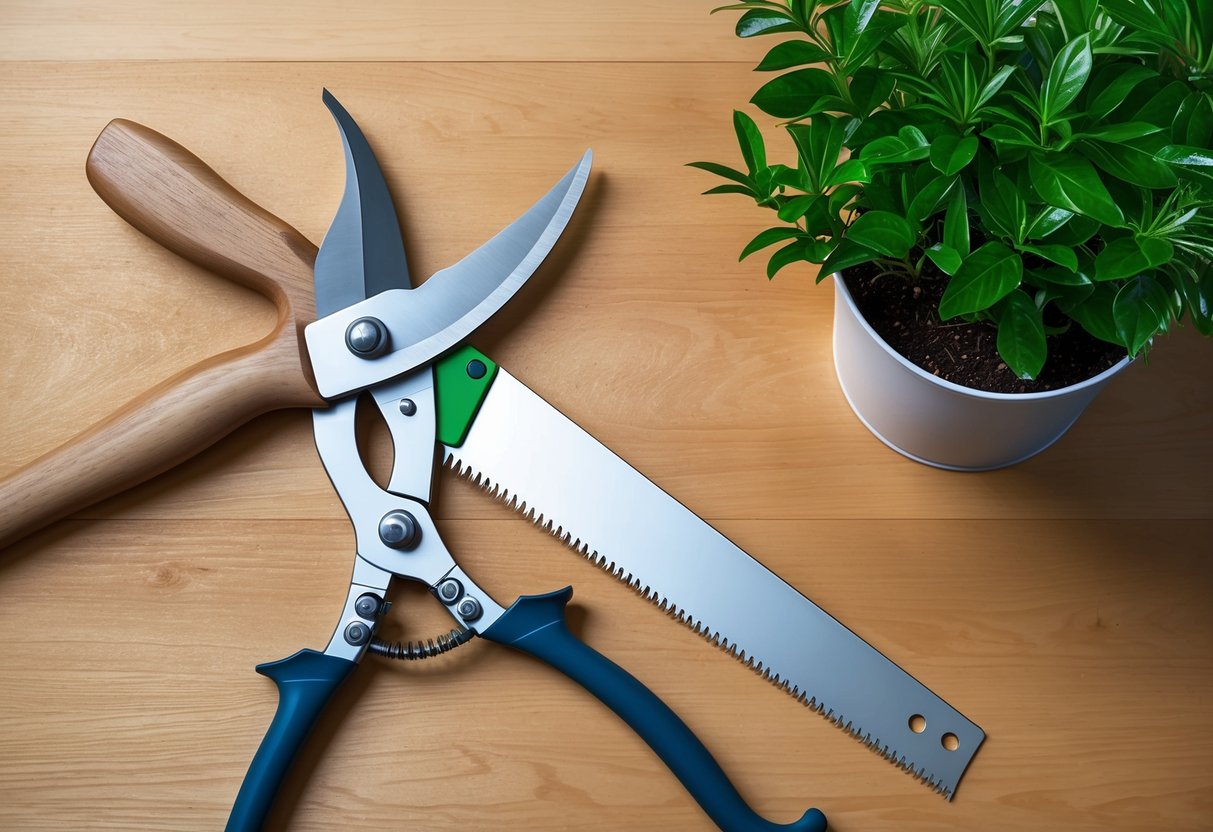
Pruning Techniques for Healthier Plants
Effective pruning techniques enhance plant health, encourage vigorous growth, and help prevent the spread of disease. Using proper methods ensures precise cuts, improving recovery and appearance while minimizing stress on shrubs, trees, and flowering plants.
Proper Deadheading Methods
Deadheading involves removing spent or faded flowers to promote new blooms and direct energy back into the plant’s growth. The most effective way is to use clean, sharp bypass pruners or hand pruners to snip just above the first set of healthy leaves below the faded flower.
This helps avoid damaging nearby buds or stems. Gardeners should frequently inspect annuals and perennials, deadheading regularly during blooming seasons for plants like roses, daisies, and marigolds.
Best results come from cutting at a slight angle, as this allows water to shed off the cut site and reduces rot. Always sterilize cutting tools between uses to minimize disease transfer.
Deadheading not only enhances the plant’s appearance, but also prolongs flowering and supports overall plant vigor. Quick removal of old blooms prevents seed development, redirecting nutrients toward fresh growth and root strength.
A well-maintained deadheading routine leads to fuller, more vibrant growth throughout the season.
How to Prune Dead Branches
Pruning dead branches is crucial for plant health and safety. Remove any dead, diseased, or damaged branches as soon as they are noticed.
Always use sharp loppers, hand pruners, or a pruning saw for thicker limbs; these tools help achieve a clean, efficient cut without unnecessary tearing or crushing. To remove a dead branch, start by cutting a few inches away from the branch collar (the swollen area where the branch meets the trunk or main stem), then make a final cut just outside the collar to promote proper healing.
Avoid leaving stubs behind, as they can invite disease and decay. Careful observation and timely removal of dead branches can prevent insect infestations and obstacles that impede the plant’s natural shape.
For larger plants and trees, consider loppers for branches up to 1-2 inches and a pruning saw for anything thicker, as recommended in this winter pruning guide. Always wear gloves and safety glasses when pruning to stay protected from sharp branches and flying debris.
Understanding the Branch Collar
The branch collar is the distinct, slightly raised tissue found at the base of a branch where it attaches to the trunk or a larger limb. Recognizing and preserving the branch collar is fundamental for successful pruning because this area contains specialized cells that help close wounds and resist disease.
When cutting branches, always prune just outside the branch collar rather than flush against the trunk or limb. This technique allows the plant’s natural defenses to seal the wound efficiently, minimizing the risk of infection and decay.
Avoid cutting into the collar, as it slows healing and can compromise structural integrity. Proper identification and respect for the branch collar ensure healthier, longer-lived plants.
For beginners, the branch collar typically appears as a slight ridge or change in texture at the base of the branch. Mastering this concept is one of the most important pruning techniques for both ornamental and fruit-bearing varieties, supporting optimal plant health and resilience.
Maintenance and Care of Pruning Tools

Regular care keeps pruning tools performing at their best, prevents disease spread, and ensures each cut is clean and precise. Proper maintenance extends the lifespan of shears, loppers, and saws, while sharp blades make a noticeable difference in plant health and ease of pruning.
Cleaning After Use
Cleaning pruning tools after every session removes sap, dirt, and plant debris that can blunt blades and transfer pathogens. To prevent rust and bacterial buildup, users should rinse blades with water and wipe them dry immediately after use.
For tougher grime, a stiff brush or a mild detergent works well. Disinfecting tools between plants, especially if there is visible disease, helps avoid spreading bacteria or fungi.
A quick dip in a solution of one part bleach to nine parts water can sanitize blades effectively. Always dry the tools fully after cleaning to keep corrosion at bay.
Wiping blades with a bit of rubbing alcohol is another fast method to sterilize. Consistent cleaning is important for ensuring the longevity of bypass shears and saws, helping users achieve sharper, healthier cuts over time.
Sharpening and Oil Maintenance
Sharp blades are crucial for achieving clean cuts that minimize plant damage and foster quicker healing. Gardeners should inspect their tools regularly and sharpen blades with a whetstone, carbide sharpener, or specialized sharpening tool, following the blade’s original angle.
Dull blades increase effort and crush stems, which can injure plants. It is recommended to sharpen pruning shears, loppers, and saws at least once a season or whenever a noticeable drop in cutting performance occurs.
Applying a few drops of lubricating oil after sharpening helps reduce friction during use and protects against rust. Lightly coating the pivot points and moving parts with oil maintains smooth tool action and extends mechanical life.
Routine sharpening and oiling both preserve the edge and keep the tool ready for precise tasks, ensuring each trim supports plant health and encourages robust growth.
Storage Best Practices
Storing pruning tools correctly is as important as cleaning and sharpening them. Tools should be kept in a dry, ventilated area to prevent rust and corrosion.
Using a pegboard, wall rack, or dedicated toolbox helps keep blades from knocking together and becoming dull. For added blade protection, some gardeners use blade covers or wrap shears in a cloth.
Always store tools with blades closed and locks engaged for safety and to prevent accidental damage. Avoid leaving pruners and saws exposed to the elements, as moisture quickly promotes rust.
Organizing tools so they are easy to access not only streamlines gardening but also encourages regular maintenance and keeps blades sharp for longer periods. These simple storage habits support consistently smooth, clean pruning cuts and healthier plants.